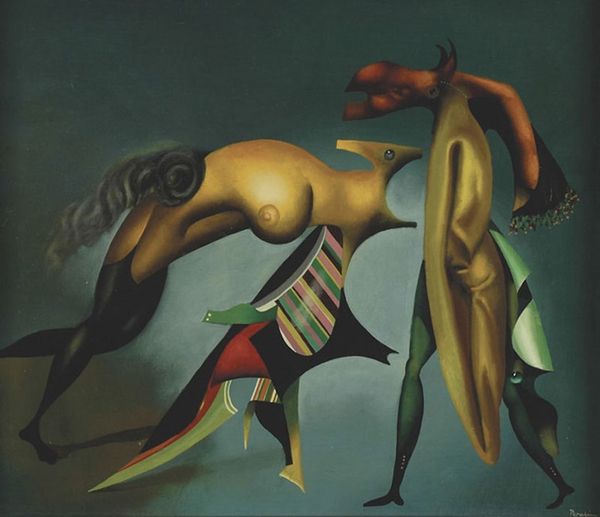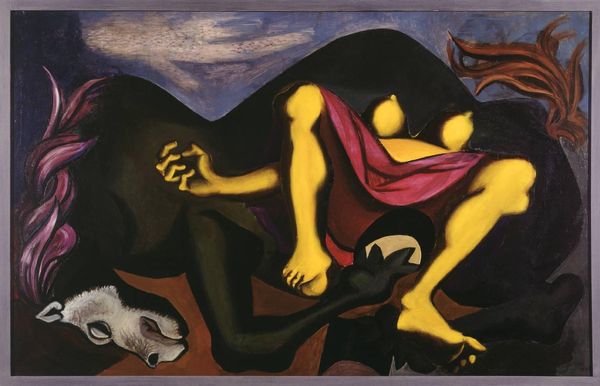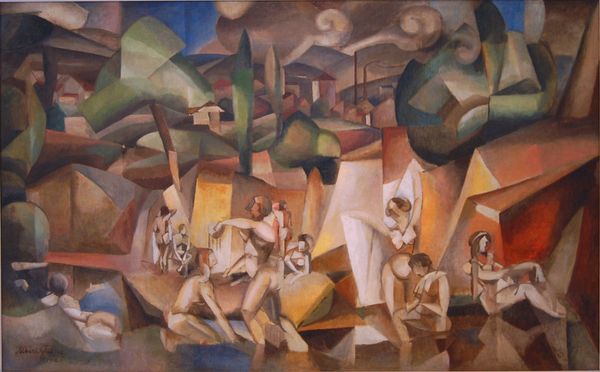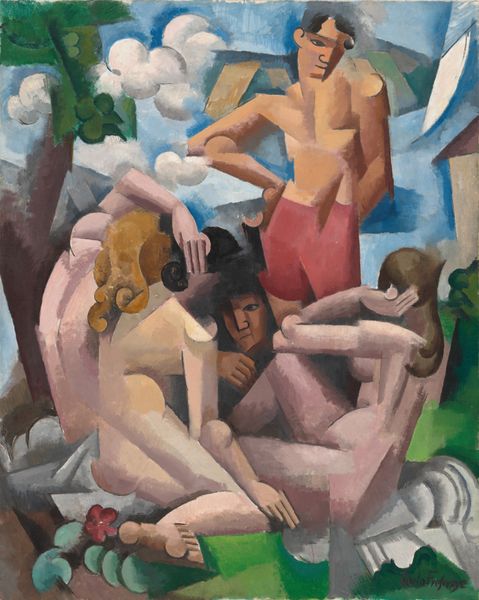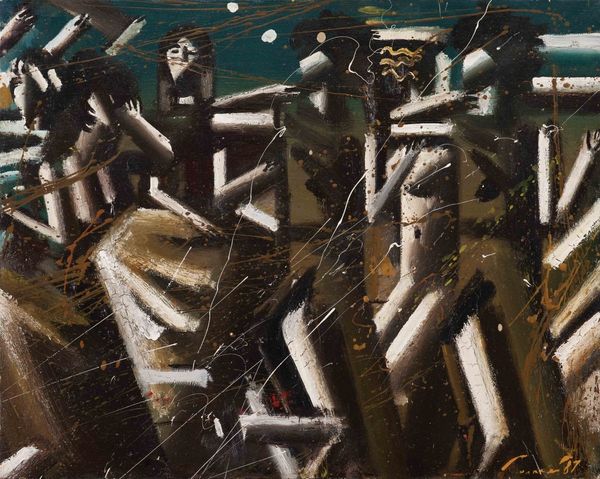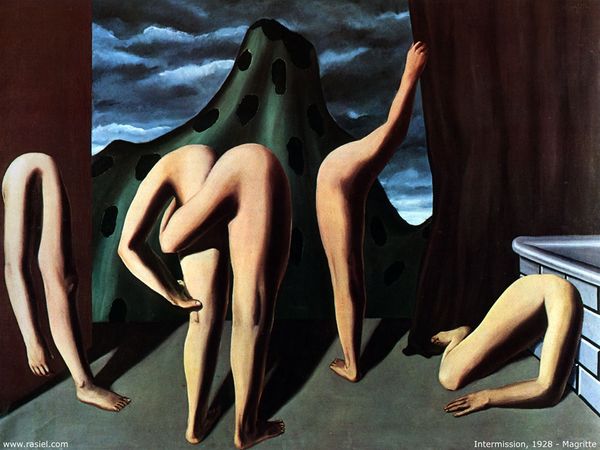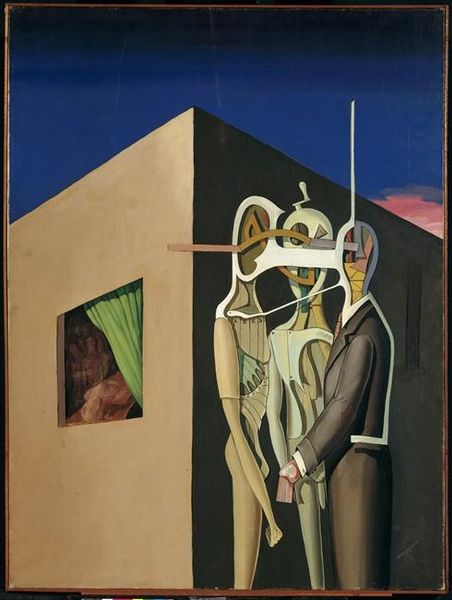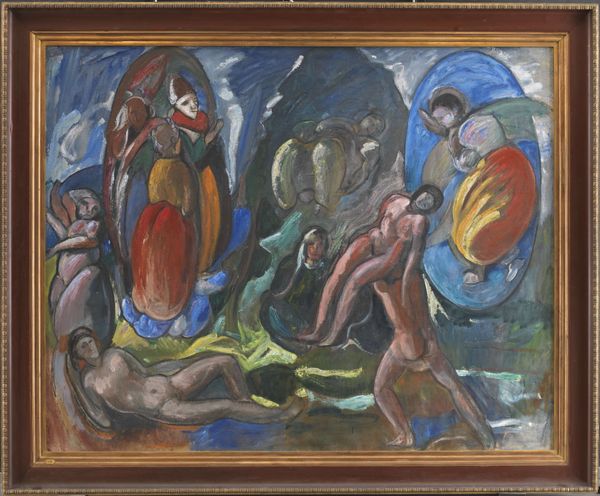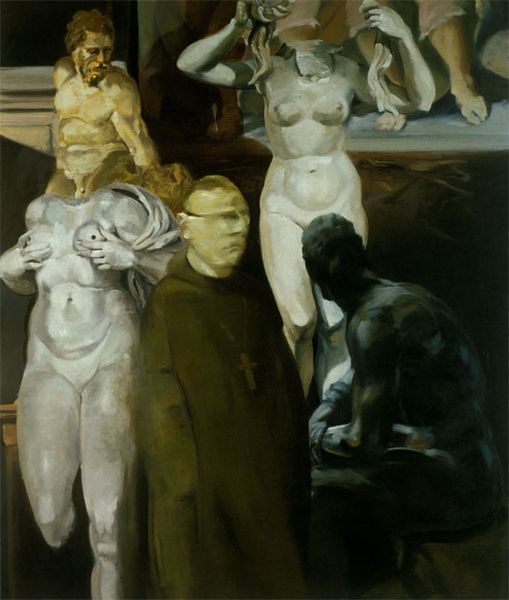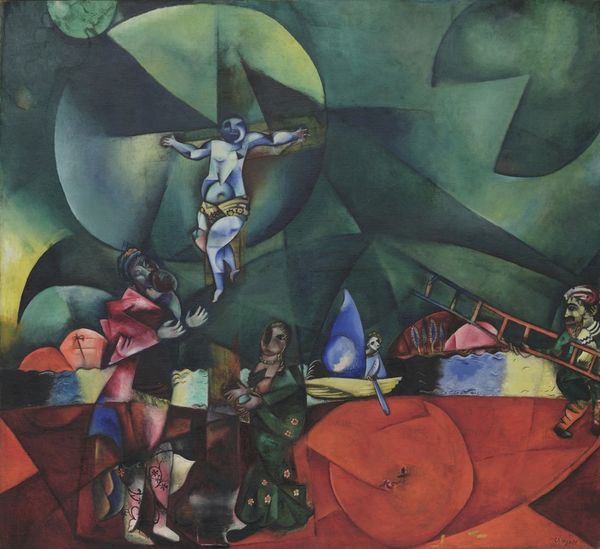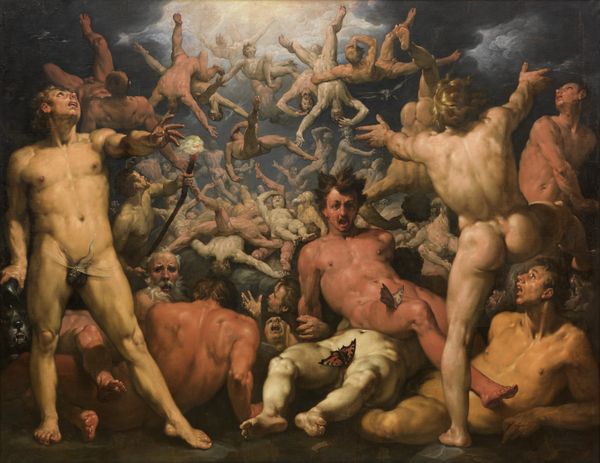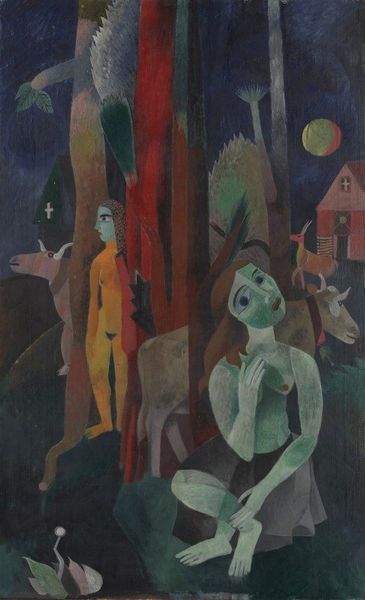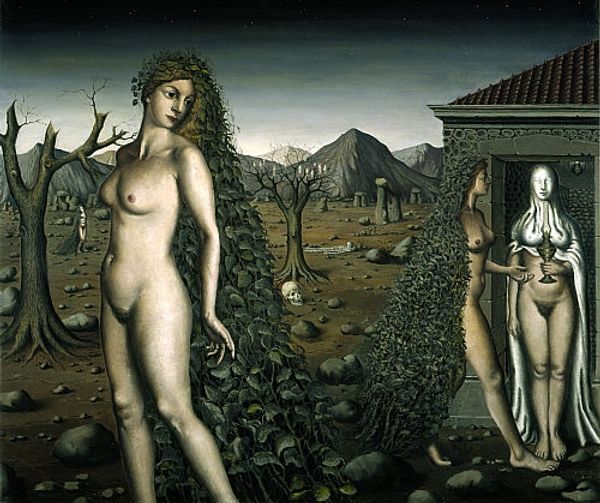
Dimensions: support: 511 x 781 mm frame: 820 x 1092 x 85 mm
Copyright: © Salvador Dali, Gala-Salvador Dali Foundation/DACS, London 2014 | CC-BY-NC-ND 4.0 DEED, Photo: Tate
Curator: Here we have Salvador Dalí’s “Metamorphosis of Narcissus,” currently held at the Tate Modern. Look at the double image, the shifting forms! Editor: It’s unsettling, isn't it? The whole scene feels heavy, like a dream you can't quite shake off. Curator: Dalí uses oil paint to create this doubling effect; the story of Narcissus is reshaped through Freudian ideas of transformation and the gaze. Editor: Right! And the second figure with the egg… it feels like a rebirth, or maybe just a fragile hope emerging from the darkness of self-obsession. The ant crawling represents death. Curator: Absolutely, and the way he renders the landscape, the rock formations mimicking the human form—it all speaks to a complex interplay between the internal and external world. Editor: I’m struck by how the colors contribute to the mood, the murky browns and greens, contrasting with the pale figure and flower, making it all deeply symbolic. Curator: It really pushes the boundaries of representation and explores the myth in surprising ways. Editor: Makes you wonder how he manipulated the materials and narrative to such a deeply disturbing yet oddly compelling picture. Curator: Precisely!
Comments
tatemodern 8 months ago
⋮
http://www.tate.org.uk/art/artworks/dali-metamorphosis-of-narcissus-t02343
Join the conversation
Join millions of artists and users on Artera today and experience the ultimate creative platform.
tatemodern 8 months ago
⋮
This artwork is inspired by a poem by Roman poet Ovid where young Narcissus fell in love with his own reflection in a pool. Having realised that his love could never be reciprocated, Narcissus pined away, turning into a flower. Dalí wrote a homonymous poem to be exhibited alongside the work. This literary component adds additional layers of meaning to the painting. Recent scholarship suggests that it evokes the emotional turmoil that followed the murder of the poet Federico García Lorca (1898– 1936) – with whom Dalí had an intimate relationship – and the strengthening of the artist’s bond with his wife, Gala. Gallery label, September 2024

